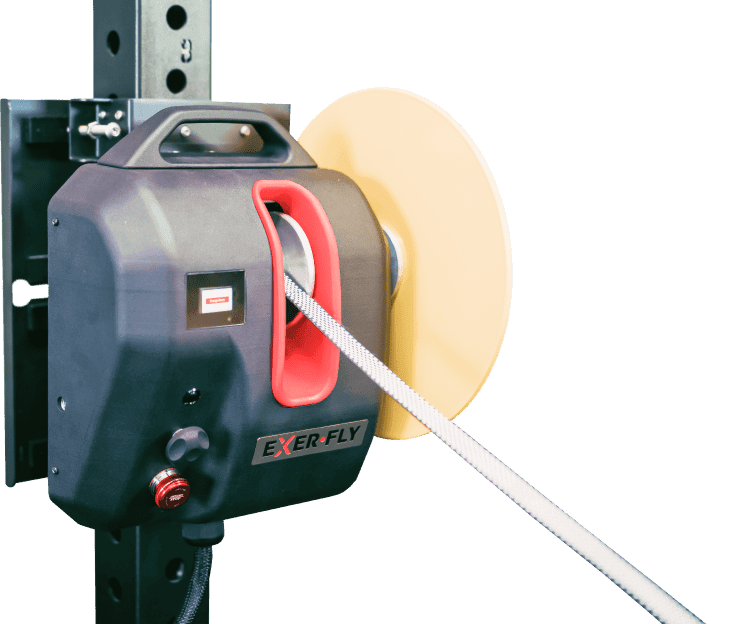
Effects of Inertial Setting on Power, Force, Work, and Eccentric Overload During Flywheel Resistance Exercise in Women and Men
Introduction
Flywheel iso-inertial resistance exercise (RE) was first designed as a countermeasure for the damaging effects of microgravity on skeletal muscle and is now a prevalent RE model in elite sports, rehabilitation, and injury prevention programs.
Furthermore, flywheel RE has become a novel conditioning routine for recreational practitioners and aging populations. This study analyzed force, power, work, and eccentric overload generated during knee extension flywheel RE with 6 different inertias in women and men.
In addition, differences in force production during coupled ECC–CON and isolated CON flywheel RE were addressed to analyze the stretch-shortening cycle (SSC) use indirectly. We hypothesized that force, power, and work would differ across sexes and inertia and that isolated CON actions would call for lower force production than coupled ECC–CON muscle actions, underlining the importance of the SSC during flywheel RE.
What They Did
Twenty-two subjects (11 women and 11 men) volunteered for the study with no previous muscle joint or bone injury for the past 6 months. Subjects were healthy and moderately active individuals engaged in vigorous or moderate exercise 2–4 days per week.
Participants performed maximal unilateral (in both legs) isolated CON and coupled CON–ECC tests in a flywheel knee extension device using 6 different inertias, i.e., 0.0125, 0.025, 0.0375, 0.05, 0.075, 0.1 kg·m2. Force, power, and work produced was measured, and ECC overload was calculated after that.
In addition, force during isolated CON exercise was also assessed. Before any test using the flywheel knee extension device, participants completed 2 familiarization sessions to ensure appropriate technique during tests. All tests were preceded by a standardized warm-up and performed at the same time of the day (±1 hour).
What They Found
In agreement with the hypothesis, researchers found significant differences in force, power, and work across inertia and between men and women. We also report that performing RE using this particular technology allows for a substantial SSC use, maximized by using medium inertia in both sexes.
Power decreased as higher inertia was used, with men showing more significant (p ≤ 0.05) decrements than women (−36 vs. −29% from lowest to highest inertia). In contrast, work increased as higher inertias were employed, independent of sex (p ≤ 0.05; ∼48% from lowest to highest inertia).
Women increased CON and ECC mean force (46–55%, respectively) more (p ≤ 0.05) than men (34–50%, respectively) from the lowest to the highest inertia evaluated. However, the opposite was found for peak force data (i.e., peak force increased more in men than in women as inertia was increased).
Men, but not women, increased ECC overload from inertia 0.0125 to 0.0375 kg·m2. Although estimated stretch-shorting cycle use during flywheel exercise was higher (p ≤ 0.05) in men (6.6%) than in women (4.9%), values were greater for both sexes when using low-to-medium inertias.
Practical Application
Isoinertial flywheel resistance exercise is an effective method to increase force, power, and muscle mass. Considering this study's power, work, ECC overload, and SSC use data, the inertia of 0.0375 kg·m2 seems to be an appropriate choice for general conditioning purposes in both women and men.
In contrast, athletes looking for explosive adaptations can use lower inertias, calling for a shorter ECC–CON coupling time and greater power production, whereas practitioners pursuing greater work output during RE should employ higher inertias.
In addition, modifying the inertial setting during flywheel RE may affect women and men differently regarding force, power produced, and ECC overload achieved.
If you want to improve your fitness, whether for athletic performance or physique, book a free consultation with our team, and we can discuss which Exerfly device fits your outcomes best.
Martinez-Aranda, L. M., & Fernandez-Gonzalo, R. (2017). Effects of inertial setting on power, force, work, and eccentric overload during flywheel resistance exercise in women and men. The Journal of Strength & Conditioning Research, 31(6), 1653-1661.






